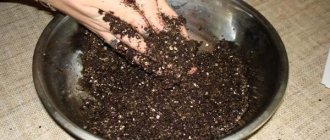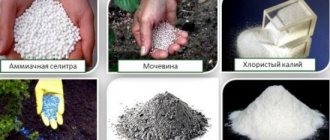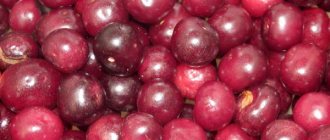Violet (Saintpaulia) is the most common indoor flower. If you care for it properly, it will constantly delight you with its flowering. Feeding violets is very important. If she has enough nutrition, she will bloom for a long time, forming lush caps of flowers. In this article we will tell you how to feed violets at home.
Timing of fertilizing 2. Folk remedies for feeding violets 3. Mineral fertilizers for the beauty and health of flower crops 4. Preparations for watering flowers
Photo: Violets need fertilizer all year round.
Briefly about the features of keeping violets
Perhaps you know what rules must be followed when planting violets at home.
But even if so, repetition is the mother of learning, so let’s list the features of keeping Saintpaulia at home again. Capacity. In order to grow and bloom normally, the violet pot must have a diameter of 13 cm.
Substrate. The soil in which you plant a houseplant must be well aerated and light enough
It is important that the substrate has the ability to retain moisture.
Content temperature. The minimum temperature standard for growing Saintpaulias is 20 degrees Celsius. Maximum - 25 degrees.
Regularity of watering. It is important not to overfill or overfill the violet.
Don’t let the flower go without water for too long, but you shouldn’t add water to the still-damp soil either.
Winter care. During the cold season, violets are sorely lacking sunlight. Therefore, it is important to illuminate Saintpaulias with special lamps. If you don’t have them on your household, regular solar lamps will do.
Another point of caring for Saintpaulias is feeding. We will talk about it in more detail below.
But let’s make a reservation right away: it’s not enough to just fertilize violets, it’s important to do it in a timely manner. Because, for example, in the cold season, microelements added to the soil will only interfere with Saintpaulia
And this is not the only feature of adding nutrients to the soil.
Coffee grounds
(adsbygoogle = window.adsbygoogle || []).push({});
Coffee grounds are used as feed, but they can be used to make the soil more loose. In order to test this fertilizer in action, you need to mix the grounds with soil and pour the fertilizer into a pot of violets. At the same time, the plant should not be watered for some time. This will be appropriate if your violet lacks soil acidity.
"Folk remedies. How to feed at home
Many gardeners believe that the most affordable means of fertilizer are folk remedies.
Black tea
During transplantation, plants need proper care.
One of the important points in care is proper soil moisture.
To prevent the soil from drying out, many people use tea leaves in a ratio of 1:3 to soil.
It provides looseness and lightness to the soil.
Coffee grounds
It has a similar effect to tea leaves - it provides looseness and lightness. But unlike tea, coffee grounds can be used for watering.
Just remember that when watering flowers with grounds, water can only be added after a while.
Yeast
They support the immunity of violets and also strengthen the root system.
In order to prepare yeast for watering you will need:
- Mix 40 g sugar and 5 g dry instant yeast
- Add 5 liters of water
- Place in a warm place for 3-4 hours
- Before use, dilute with water 1:5
You can water violets with this solution all year round. In summer no more than 3 times, and in winter one watering per month is enough.
Sugar
The most affordable fertilizer at home is sugar.
And not only because every housewife has it in the kitchen, but also because of the ease of preparation.
Simply dilute 50 grams of sugar in one liter of water and feed the plant.
Use the solution immediately after preparation, without further storage. Fertilize once a month.
Vitamin B12
Just like yeast, it strengthens the immune system. Most often used: when the violet has experienced stress (transplantation, purchase in a store) or is exhausted (after flowering).
During these periods, take one ampoule of the vitamin and dilute it with water in a ratio of 1:10.
Use no more than 2-3 times a year.
Citrus
These fruits benefit not only people, but also plants, protecting against various pests and strengthening the immune system. The peel of lemon, grapefruit, orange or tangerine is used.
- Wash the fruit
- Pour boiling water over the peel and leave for a day
- Strain
- Before use, dilute with water 1:10
Onion peel
In order for the husk to be beneficial, it must be: boiled, cooled, strained and sprayed on the plant.
This infusion perfectly gets rid of pests and protects against diseases.
Can be used for prevention, after a change of environment, after abundant flowering, in the spring, when the phase of abundant flowering begins, etc.
Iodine
The trace element Saintpaulia needs is used no more than three times per season. It is prepared in this way: one drop is diluted in three liters of water.
It is better to make a weak solution. Large amounts of iodine can damage the roots.
Black tea
In order to feed a flower with tea, you need to mix dry tea leaves with soil in a ratio of 1:3. This is a great way to make the soil light and loose. The structure of the soil improves, the plant begins to grow faster and take on a healthy appearance. Black tea fertilizer reliably protects the soil from drying out. This is a big plus, since violet is a moisture-loving plant and very easily loses its tone at the slightest lack of humidity. Therefore, feeding a violet with black tea is to give it protection from drying out.
How to care for ha violets
Even if you chose the right place and purchased a young healthy plant, this does not mean that the violet will not require care and will grow on its own. Of course, this is not at all true. For decoration and abundant flowering, your plants need good care, which includes several components:
- selection of suitable soil. When you decide to replant your violet, be sure to purchase special soil from the store. If you cannot purchase it for some reason, prepare the necessary mixture yourself by adding peat and sand to the ground. In this case, it is best to take soil from under pine and birch trees. You should not pour a lot of sand; if the soil is not loose enough, add perlite to it;
- correct watering. Violets do not care at all what kind of watering they receive, so you must know exactly what you can water these flowers with and what you should never water them with. Water for irrigation must sit for at least a day and must be warm, not lower than room temperature. Otherwise, brown spots will appear on the leaves;
- maintaining moist air in the room where your Saintpaulias are located is the second name for violets. These flowers prefer to grow in high humidity, but their hairy leaves cannot be sprayed, they do not like this. You can place saucers of water between flower pots or simply place them on wet stones, placing pebbles or gravel in a tray;
- Feeding with the right fertilizers is very important for violets; it is an essential component of their care. You can fertilize violets with a special composition, which is sold in liquid form in the store. You can dilute it with water in the required proportions and simply add it to water for irrigation.
However, I feed my violets a little differently - I put them in trays with water, to which fertilizer has been added in the right amount. Then the flowers are constantly moisturized and can receive as much water as they need. With such bottom watering, trays with pots can be safely placed on window sills; central heating radiators will not harm them.
In addition, water is guaranteed not to get on the violet rosette, which these plants simply cannot tolerate, and the leaves will not get burned if splashes of water remain on the leaves under the bright sun. In addition, with bottom watering you will not flood your Saintpaulias. By the way, when flooded, the plant can die in a matter of days.
Fertilizer should be applied no more than twice a month, so there is no need to constantly add it to the water for irrigation. At the same time, home remedies are also suitable for violets:
- you can add a little regular dry tea leaves to the soil;
- Coffee grounds are used as fertilizer, mixed with soil;
- an infusion of citrus peels is very good for violets, just don’t make it too concentrated;
- A decoction of onion peels is perfect for watering;
- no more than once a month you can water the violets with sugar water or diluted yeast. You can combine both.
This sucker is optimal for any flowering plants, not just violets. At first, when the leaves grow, nitrogen is needed, later, when the buds are laid, potassium and phosphate are needed. It is in this combination of fertilizers, applied in a timely manner and in the right quantity, that lies the secret of abundant flowering.
Citrus peel
Tangerine, orange, lemon, grapefruit and other citrus fruits can strengthen the violet’s immunity and free it from various kinds of pests, thereby protecting it from various diseases.
To prepare this truly worthwhile fertilizer for violets, you need to pour boiling water over the citrus peels and let it brew for about a day. After this, strain the resulting infusion using gauze or a sieve.
It is important to know that before watering the plant with fertilizer, you need to dilute it with water 1:10. Otherwise, an aggressive environment may harm the delicate roots of the plant.
How to water homemade violets to bloom profusely
How to feed ficus benjamina at home
Fertilizers can be intended for root feeding or for spraying Saintpaulia. The use of certain drugs must be due to compelling reasons. To fertilize violets, it is recommended to use either ready-made preparations or self-prepared ones using natural ingredients.
Proper watering of the plant
Ready-made complex fertilizers
The use of ready-made preparations significantly reduces the time and facilitates the process of fertilizing.
Unlike folk remedies, they do not need to be prepared in advance and concentration must be maintained. For violets it is recommended to use the following:
- Peters (Peters Professional). After using this product, the condition of the root system and violet leaves improves. It is recommended to use at the first signs of calcium deficiency. Application in winter promotes better budding in the future.
- Etisso. The product is enriched with vitamin B and beneficial microelements. Helps improve budding and increase the number of inflorescences.
- The universal fertilizer Fusco helps improve the appearance of the flower. The use of this drug allows you to increase the flowering time of violets at home.
- The drug Fort is used not only for violets, but also for begonias. It helps restore the soil and maintain the health of the flower. The manufacturer recommends weekly feeding from spring to autumn, and monthly in the autumn-winter period.
On a note. Complex fertilizers are considered more productive and effective than folk remedies.
Another interesting question is how to feed violets to stimulate them during the breeding season? Experts recommend using cytokinin paste for these purposes. If an artificially scratched plant stem is treated with this product, in 10-12 days children will grow on the flower.
Mineral nutrition for violets
Organic
The violet should be fed consistently, alternating organic and mineral preparations. Saintpaulia loves any organic matter very much. The selection of necessary fertilizers should be carried out as carefully as possible. Experienced flower growers advise using:
- Manure, bird droppings. It is preferable to use dry preparations.
- Vermicompost, concentrated or dry.
- Preparations containing microbiological components.
- Special organic substances intended specifically for violets.
Yeast
Yeast is very useful for violets, especially those weakened in winter.
Yeast dressing is prepared according to the following recipe: 1 tablespoon of dry yeast is diluted in 10 liters of warm water and 30 grams of sugar is added. The resulting solution must be infused, after which it is diluted with infused water in a ratio of 1/5. The prepared violet mixture can be watered once every 2 weeks.
Thanks to this feeding, the plant is supplied with nitrogen and the result is visible within a week:
- the plant becomes healthier;
- the root system becomes stronger;
- the green mass is growing.
When is feeding needed?
Under natural conditions, feeding Saintpaulia is out of the question. They will not grow in conditions that are not suitable for her. There are many of them only where conditions are good for them:
- At home, they are used selectively at different times: During the period of growth. The plant needs to get stronger. Grow good roots and full leaves;
- When flowering. Flowering itself requires a lot of energy and nutrients;
- And least of all after flowering. The plant needs rest and rest. And from fertilizers.
- Simple mineral fertilizers. With one element (for example, potassium);
Microbiological fertilizers.
- There are periods in the life of a violet when applied fertilizers are not desirable for it. And even harmful: In dry soil;
- A month or two after transplantation;
- When harmful insects and signs of disease appear.
Important! They should not be added at high temperatures. Same as for low ones.
Additional terms
Home feeding of violets is very effective. All of the above methods are guaranteed to give a positive result. However, this will happen provided that all plant care factors are met, such as proper lighting, humidity, air temperature and moderate watering.
When growing violets, pay attention to home feeding of your plants. This will not take much effort and will not take much time, but the plants will thank you and will definitely delight you with beautiful lush flowering and rich green color. You will immediately appreciate the transformed appearance of your favorite plant, since fertilizing a violet is giving it a chance to become healthier.
Fertilizers that violets need
How to feed violets: methods of fertilizing
For all varieties of Saintpaulia there is one fertilizing technique. The exception is ampelous varieties.
Root feeding
To carry out root feeding, the following technology is used:
- The water should be at a warm temperature; it is pre-filtered and left to settle for a day. Fertilizers are dissolved in it according to the instructions. To treat young plants, it is recommended to use universal fertilizer, but the amount of fertilizer should be 2 times less than indicated.
- The concentration of fertilizers for mini-violets should be even less. These varieties are fertilized once a month.
- Liquid solutions of drugs are applied carefully only at the root to prevent liquid from getting into the center of the outlet and onto the foliage.
- If there are a lot of pots of violets, you can use the tray feeding method. The solution is poured into a large tray, where all the pots are placed. Leave for 15-20 minutes. Plants will receive all their nutrients through the drainage holes. Having fertilized, the pots are placed in their places.
Foliar feeding of violets
Many gardeners prefer foliar feeding for better absorption of nutrients. Only when fertilizing Saintpaulias you need to follow some rules:
- Do not allow drops of liquid to accumulate on the leaves. This can lead to rot and sunburn.
- Before starting feeding, the foliage must be washed to remove dust.
- Feeding should be done in the evening.
- For foliar feeding, the fertilizer concentration should be two times lower than for root watering.
- The solution is sprayed on the back of the leaves, so it is absorbed better and faster. It must be remembered that the liquid should not get on the flowers and buds of violets.
A special method of applying fertilizer is watering on a wick. Flower pots are placed on a tray with a nutrient solution. It is convenient to use this method when there are a lot of violets and they are installed on racks.
Banana peels
Banana peel is deservedly considered the best natural fertilizer for violets. It contains potassium, phosphorus, nitrogen and magnesium. Thanks to these elements, the flower grows better, the foliage becomes greener, and the plant’s immunity increases. This fertilizer does not contain chemicals, so the flower will not get burns to the roots and foliage.
It’s very simple to prepare banana peel fertilizer:
- the skins of two bananas are dried in the oven and then crushed;
- 1 liter of water is mixed with the resulting banana powder, 1 tablespoon of eggshell powder and 20 grams of magnesium sulfate are added;
- everything is thoroughly mixed and infused for about 3 hours.
The resulting solution can be watered or sprayed on the violet.
What fertilizers are needed for violets?
Like any plant, violets need basic elements for development - nitrogen, phosphorus and potassium, as well as microelements and organic matter. Let us briefly show what they are responsible for:
- Nitrogen promotes the growth of green mass, so its application is especially important for young plants. In the future, when the flower gets stronger and acquires a sufficient number of green and lush leaves, nitrogen-containing fertilizing is reduced;
- phosphorus and potassium are responsible for the formation of buds and flowering of violets;
- microfertilizers and humic acids are also necessary for plants to develop properly. If the diet lacks any of the elements, the flower will react to this either by yellowing of the leaves, or a change in the color of the petals, their premature wilting and other deviations.
Yellowing of violet leaves may indicate a lack of feeding
Purchased fertilizers
The easiest way is to purchase complex fertilizers, which the manufacturer has compiled from all the elements necessary for violets. The gardener will only have to dissolve this composition in water according to the rate specified in the manual for a specific fertilizer. However, you cannot use tap water - it contains chlorine, which is harmful to plants. It is better to use melt or rain water. Filtered, bottled or settled water at room temperature is also suitable.
Table: popular fertilizers for violets
| Name of fertilizer | Country of manufacture | Compound | Release form | Dosage | Features of application |
| Bona Forte | Russia | Basic (nitrogen (N) - 5%, phosphorus (P) - 5%, potassium (K) -9%) and 9 trace elements in chelated (easily digestible) form, as well as humic acids | Bottle 285 ml | 10 ml per 1.5 liters of water | Unused solution can be stored for up to two weeks |
| Master | Ukraine | NPK 3:8:5%, 6 trace elements | Bottle 300 ml | 1 cap (5 ml) per 1 liter of water | Shelf life - 3 years |
| Etisso | Germany | NPK 3.8:7.6:7.5%, 6 microelements, vitamin B1 | Bottles with dispenser of 250, 500 and 1000 ml | 1 dose (10 ml) per 1.5 liters of water | |
| Good power | Russia | 7 trace elements in chelated form, vitamins B1, PP, succinic acid, humic acids | Bottle 500 ml | 1 cap (5 ml) per 0.5 l of water | The prepared solution can be stored for up to three days. Shelf life: 5 years. |
| Fusco | Russia | NPK 4:5:6%, 8 trace elements | Bottle 250 ml | 1 cap (10 ml) per 1.5 liters of water | The prepared solution can be stored for up to two weeks. |
| Ideal | Russia | NPK 5:10:10%, humic acids - 2% | Plastic container 0.5; 1; 3 liters | 2 caps (9 ml) per 0.5 l of water | Application interval 1–2 weeks |
The table shows dosages for root feeding. If foliar applications are used, the dosage is halved.
Photo gallery: fertilizers for violets
Folk remedies
Many amateur flower growers supplement fertilizing with purchased fertilizers using various folk remedies, and some even make do with only them. Most frequently mentioned:
- yeast. For feeding, dissolve 5 grams of dry yeast and 2 tbsp. spoons of sugar in 5 liters of warm water. Allow to ferment for 3–4 hours and use, diluting with water in a ratio of 1:5;
- solution 1 tbsp. spoons of sugar (or 1 teaspoon of glucose) in 1 liter of water are used for watering once a month;
- Black tea. When planting violets, dry tea mixed with soil (1:3) will make the soil light and loose, which will protect it from drying out;
- coffee grounds can be used in the same way, or you can simply add them periodically to the root;
- An infusion of citrus peels improves plant immunity and also repels some pests. The peel is poured with boiling water and left for 24 hours. The resulting infusion is diluted with ten times the amount of water and used for irrigation;
- A decoction of onion peels will not only feed the violet, but also protect it from diseases and pests. One or two handfuls of husks are poured into 1.5 liters of boiling water and boiled for 5–7 minutes. Then leave for 2-3 hours and cool. The plant and top layer of soil are sprayed with freshly prepared infusion once a month.
For the violet to fully develop, it needs all macro- and microelements in balanced quantities. If you follow the timing and rules for applying fertilizers, beautifully blooming Saintpaulias will delight the eye and lift the spirits of everyone in the household.
Onion
Onions are an excellent fertilizer if the plant is attacked by pests or diseases. In addition, onions are beneficial for the growth and flowering of violets.
To prepare the decoction, the onion skins need to be boiled under a lid, then left to infuse, subsequently filtered through cheesecloth or a sieve.
This decoction should be used as a sprayer. But it is important to note that the shelf life of this infusion quickly expires. The best option would be to use the infusion on the day of preparation.
Types of fertilizers for violets
Various fertilizers are used to feed Saintpaulia. Once you delve into the structure and understand the rules of application and the needs of the flower, you can achieve abundant flowering for most of the year.
Feedings are:
Simple:
- nitrogen containing;
- phosphate, superphosphate;
- potassium salts.
Since they include one mineral in the structure, they can be added to the soil one at a time. Such fertilizers help to increase the pH level of the soil and make the flowering process more intense.
Complex fertilizers are balanced, saturated with all important mineral components, suitable for saturating the soil even under flowering Saintpaulias:
- Ethisso (nitrogen, phosphorus, potassium);
- Bona Forte (N, P, K);
- Master - universal feeding.
The drugs are produced in the form of powder, liquid, and can be universal or specialized.
Organic - important for saturating the soil before planting. Thanks to organic matter, the vegetative mass gains strength.
Eggshell
Shells can be used as fertilizer in different ways:
- water the violets with a solution infused on the shell;
- use as drainage;
- add shell powder directly to the substrate.
Before use, the shells must be washed well and dried thoroughly. After this, grind and store either in a glass jar with a lid or in a paper bag.
Eggshells contain a lot of calcium, which the plant needs to grow. In addition, calcium regulates soil acidity.
Violet is a very delicate flower. Without fertilizers you cannot get abundant flowering. Each gardener decides for himself whether to use chemicals or natural fertilizers prepared at home with his own hands. There are a lot of traditional methods, but we recommend using only those proven by experienced flower growers. And then your violet will delight you with beautiful and lush flowering for a very long time.
Mr. Summer resident recommends: medicinal properties of alpine violet
The healing qualities of cyclamen have been used for several centuries. Its tubers contain substances that help fight nasal polyps, sinusitis and sinusitis. Baths with decoctions relieve arthritis pain. Alcohol tinctures from alpine violet bulbs are used for rheumatism, gout, intestinal disorders, and migraines.
Sprays containing an extract from the plant's rhizomes have an antiseptic and antimicrobial effect. In folk medicine, to remove pus from the sinuses during acute inflammation, fresh juice is prepared from crushed tubers and 1-2 drops are dripped into each nasal passage just once. This is enough for the discharge of pus to begin within half an hour. Failure to comply with the dosage can cause an allergic reaction and poisoning, because cyclamen is a poisonous plant. To avoid this, all medications based on it are used on the recommendation of a specialist.
Alpine violet , also known as European cyclamen.
This flower is ideal for those gardeners who want their home to be decorated with fresh flowers all year round - just one plant sometimes produces up to 50 beautiful flowers.
In nature, this plant grows on the slopes of the Alps, hence its name.
Transplantation and soil
Alpine violet is replanted during the hibernation period closer to autumn, when the buds of leaves appear on the bulb with roots. The size of the pot should be slightly larger than the diameter of the tuber with roots. Flowering does not occur in a large container.
A layer of drainage is placed at the bottom, then the soil mixture is filled. To do this, mix peat, sand, garden soil and humus in equal proportions. Dried or rotten roots are removed from the surface of the rhizome and immersed in the ground. Persian cyclamen must be deepened by 2/3, and European cyclamen can be completely covered with earth. If propagation is planned, then before this the bulb is cut, leaving buds and roots in each part. The cut area is treated with coal.
To accelerate growth, the tubers are sprayed with special solutions and allowed to dry in the sun, but not in direct rays. Then they are rooted into the ground. After transplanting, the pot is placed in a cool, bright place. Before the first leaves appear, watering should be sparse.
When propagating by seeds, it is necessary to put the earthen mixture in a shallow container, deepen each grain by 1 cm and level it. Cover the top with a light-proof film and moisten the soil regularly. After 30-50 days, shoots will begin to appear.
Cyclamen Purple
Description
Due to its habit of dropping leaves, the mountain violet often scares away gardeners. Having bought a beautiful flower as a bouquet, it is thrown away at the beginning of the leaf fall period. But if you know the intricacies of caring for this beautiful plant, then you can admire its wonderful fragrant flowers more than once - after all, it is a perennial.
Many cyclamens have a delightful aroma, even used in perfume compositions. The petals of cyclamen flowers are similar to the wings of amazingly beautiful butterflies that flutter over the foliage.
And the leaves of cyclamen are very decorative: smooth, decorated with silver stripes, they are a very beautiful addition to the bright bouquet of blooming cyclamen.
In addition, mountain violet has a number of healing properties that were known many centuries ago. Today the plant is used by herbalists and healers. An extract from the tubers of this plant is used in various medicines.
Cyclamen is a poisonous plant; it must be used as a medicine with great caution; it is safer to purchase ready-made pharmaceutical preparations based on it.
Diseases and pests
For alpine violet, if the rules of care are violated, the following signs are characteristic. Leaves wither and turn yellow - the air is too dry, or the temperature in the room exceeds the recommended one.
Sometimes such symptoms indicate direct sunlight hitting the plant, or a lack of watering.
Rotting of peduncles and leaves - too much water, or water getting on the surface of the tuber when watering.
The plant fades too quickly - lack of fertilizers, or too high a temperature. It is necessary to move the pot to a cooler room and arrange regular feeding.
The tips of the leaves turn yellow , flowering stops - the plant or soil is infected with a fungus. It is necessary to immediately treat European cyclamen with the drug “Topsin-M”, and also add a solution of foundationazole to the water used for irrigation.
or white plaque appear everywhere on the plant - infection with rhizoctonia or gray rot. It is necessary to replant the flower by treating the soil with fungicides, and also temporarily reduce the frequency of watering.
The most common pests of alpine violets are thrips , aphids and cyclamen mites . Anti-pest drugs – Fitoverm, Aktara, Spintor, etc. – will help you cope with them.
In addition to its excellent appearance, cyclamen also has some medicinal qualities . Based on the extract of this plant, drugs are made that are used to relieve inflammation, reduce migraines, treat sinusitis, and also as sedatives.
And for the curious, we suggest watching a video about the Alpine violet
News from partners:
2 comments
Cyclamens are flowers for very patient people. It is very difficult to wait for the first flowers when you grow them from seeds. But then they will delight you with a very long flowering period. The main thing is to avoid direct sunlight and high indoor temperatures. That is why my cyclamens live in a cool office in spring and summer, and on a heated balcony in autumn and winter.
Cyclamens are very picky flowers. Do not allow the sun to hit the plants and the temperature in the room to rise above 18 degrees. I keep my pets for six months in a cold office while there is no heating, and in the fall and winter - on a warm balcony with darkened windows.
I love flowers in the house - indoors in pots and in a bouquet on the table. One of my favorites is alpine violet. This is a little tender happiness on the windowsill. When the purchased flower began to grow bald and fade after blooming, I fell into despair.
But it turned out that it was completely in vain, the plant rests in this way. After a period of dormancy, this beautiful specimen begins to bloom again. And the best thing is that this beauty can bloom all winter long.
Therefore, I want to talk about the types and characteristics of this amazing plant and share my experience in growing the most delicate creature - the alpine violet.
Alpine violet belongs to a genus of perennial herbs that have no relationship with violets. This is a tuberous flower from the genus Primroses, and the flower received its name for its addiction to the mountain climate. And this plant is correctly called - Cyclamen. Of the 22 existing species of this plant, many are endangered.
Cyclamen is native to the mountainous and coastal regions of the Mediterranean; it can also be found in nature in the Caspian regions and in the mountains of the northeast of the African continent.
Notable is the life cycle of the alpine violet, divided into a vegetative stage and a dormant stage. But the plant's dormant stage occurs in the summer. During the sweltering summer heat in the places where it grows, the flower sleeps, dropping its leaves, and stores water for life in the tubers.
Because of these tubers, the Alpine violet was called pig bread in one 18th century book. This is because wild pigs fed on cyclamen tubers, digging the succulent tubers out of the ground during the dormant period.
For some reason, people gave this beautiful indoor plant the name Dryavka. All cyclamens come from Cyclamen persica, which is native to Turkey and the Middle East. All hybrids require similar growing conditions.
The growing season of the alpine violet begins in the fall, and this violet will bloom from October to March - it depends on the species. There are varieties of cyclamen that bloom for several months. This quality allows you to get a blooming flower bed all year round.
Alpine violet: garden care
The ideal place for planting in the garden would be the crown of any tree or the base of a bush. This will protect the flower from excess moisture during rain and from direct rays of the sun. Cyclamen loves loose soil that allows water to pass through and does not retain. To do this, it is best to dig holes and fill them with a soil mixture of turf and leaf soil with the presence of crushed stone, which serves as drainage. In garden conditions, the tubers are deepened by 10 cm to prevent freezing during the cold period.
During flowering, alpine violet needs frequent watering. Moisture getting into the rosette of leaves leads to rotting of the plant. Dried buds and yellowed leaves are removed.
Before winter, cyclamen is covered with a thick layer of foliage. Such a blanket will prevent the flower from freezing and retain moisture in the soil.
Replanting after purchase - guide
Alpine violet (Cyclamen) is not recommended to be replanted immediately after purchase.
A year later, as soon as the first shoots appear above the tuber, start replanting and follow the description:
- the flowerpot should be 2 cm larger than the bulb;
- soil, which is a mixture of peat, sand, crushed sphagnum, vermiculite and charcoal, can be bought at a flower shop;
- expanded clay will be needed for drainage;
- a thick layer of drainage and substrate is poured into the flowerpot;
- the cyclamen tuber is placed in a flowerpot (about 1/3 of the tuber remains above the ground);
- soil is added and lightly pressed down;
- the transplanted plant is watered with a weak solution of manganese.
The plant can be fertilized only after young leaves have begun to grow.
Planting a dry tree
Reproduction
Cyclamen is propagated in the summer, after it has already bloomed. The plant is carefully removed from the pot and cut into sections. You need to make sure that a part of the root and a bud remains on each division.
After this procedure, the tubers are thoroughly dried in a dark place. The cut areas should be treated with an antiseptic, such as charcoal. After drying, the separated parts are planted in small pots.











